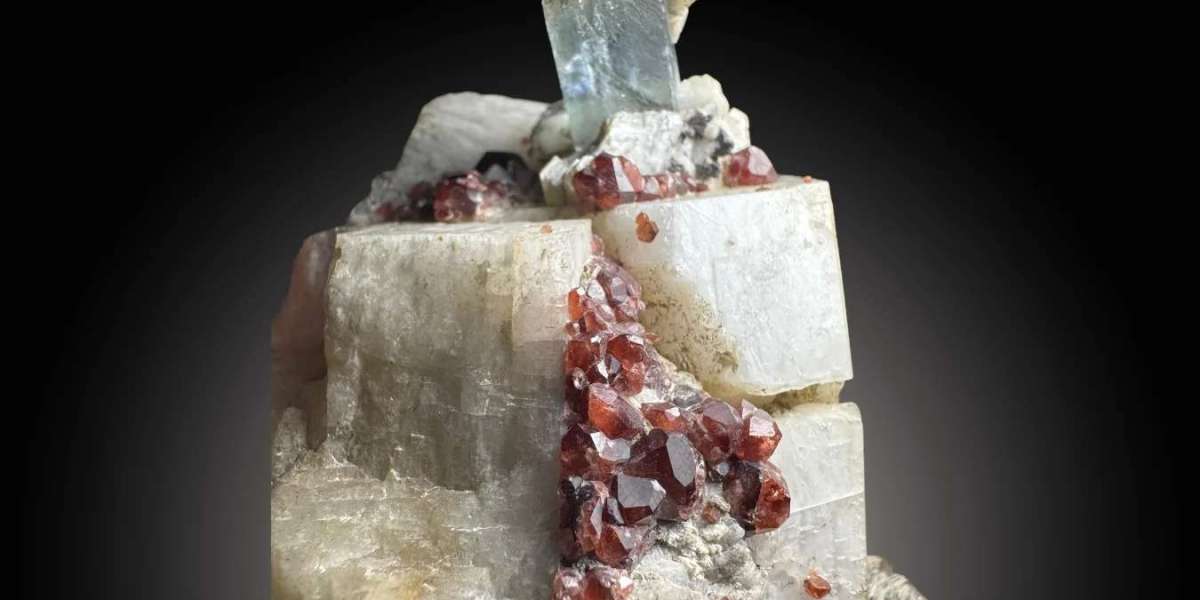Understanding the Aquamarine Mineral: A Gem of Tranquility and Power
The aquamarine mineral is a striking blue to blue-green variety of beryl, a mineral that also includes other famous gemstones like emerald and morganite. Named from the Latin phrase aqua marina, meaning “water of the sea,” aquamarine evokes the calming, fluid energy of the ocean. It is a highly prized gemstone for both aesthetic and metaphysical purposes, celebrated for its unique coloration, clarity, and association with serenity.
Belonging to the hexagonal crystal system, aquamarine has a Mohs hardness of 7.5 to 8, making it a durable option for everyday wear. It is the birthstone of March and is often associated with the zodiac sign Pisces, as well as the throat chakra, which governs communication and expression.
Physical and Chemical Properties of Aquamarine
The aquamarine mineral is composed of beryllium aluminium cyclosilicate (Be₃Al₂Si₆O₁₈). Its distinctive blue hue comes from trace amounts of iron. The intensity and exact shade of blue depend on the concentration and oxidation state of iron within the crystal lattice. Aquamarine can range from a pale sky blue to a deep oceanic teal, with deeper hues being more highly valued.
- Crystal system: Hexagonal
- Hardness: 7.5–8 on the Mohs scale
- Luster: Vitreous
- Cleavage: Imperfect
- Transparency: Transparent to translucent
- Refractive Index: 1.577 to 1.583
- Specific Gravity: 2.68–2.74
The clarity of aquamarine is one of its most defining features. Unlike emeralds, which often contain visible inclusions, aquamarines are typically eye-clean and known for their glass-like transparency.
Geological Formation and Locations
The aquamarine mineral forms in pegmatite deposits, where large mineral crystals grow in cavities filled with mineral-rich fluids. These geological environments allow the slow cooling necessary for large crystal formation, which is why aquamarine often appears in sizeable, well-formed hexagonal prisms.
Major Sources of Aquamarine
- Brazil – The world’s largest source, known for deep blue specimens from the Minas Gerais region.
- Pakistan – Produces aquamarine with a soft, sky-blue hue, often found in the Shigar Valley.
- Nigeria – Offers both light and intense colors, with high transparency.
- Madagascar – Known for its unique bluish-green aquamarine with excellent clarity.
- Russia – The Ural Mountains historically yielded high-quality aquamarines.
- United States – Colorado and California yield aquamarine in limited quantities.
The most valuable aquamarine specimens come from Brazil, where deposits have produced some of the largest and clearest stones in the world. The Dom Pedro aquamarine, weighing nearly 60 pounds, is the largest faceted aquamarine and a centerpiece of the Smithsonian Institution’s collection.
Historical and Cultural Significance
Throughout history, the aquamarine mineral has symbolized purity, youth, and hope. Ancient sailors carried it as a talisman for safe passage, believing it calmed the waves and brought good fortune. In Roman times, aquamarine was said to reconcile married couples and was used in wedding amulets.
In the Middle Ages, aquamarine was thought to be an antidote to poison and a tool for divination. People would engrave prayers or messages onto aquamarine amulets, wearing them close to the throat to enhance communication and clarity of thought.
Uses of Aquamarine in Jewelry and Design
Jewelry Applications
The aquamarine mineral is extensively used in fine jewelry, including:
- Engagement rings
- Earrings and pendants
- Bracelets and bangles
- Brooches and tiaras
Its pale blue elegance makes it an ideal gemstone for both contemporary and vintage settings. Jewelers favor aquamarine for its versatility and luster, often cutting it into emerald, oval, cushion, or pear shapes. Because of its clarity and hardness, it takes a brilliant polish, enhancing its natural brilliance.
Healing and Metaphysical Uses
Beyond adornment, aquamarine is valued in the world of crystal healing and metaphysics. Believers attribute the following properties to aquamarine:
- Calms stress and anxiety
- Supports clear communication and articulation
- Encourages emotional healing
- Promotes mental clarity and wisdom
- Enhances spiritual awareness and intuition
Practitioners often use aquamarine in meditation, placing it on the throat or heart chakra to facilitate emotional release and truthful expression.
Synthetic and Imitation Aquamarine
Due to its popularity, the aquamarine mineral is occasionally synthesized in laboratories. These lab-grown aquamarines are chemically and visually similar to natural ones, though they often lack the inclusions that can help gemologists differentiate between natural and synthetic stones.
There are also several imitations on the market, including:
- Blue topaz – Similar in color but often more intensely blue.
- Glass – Inexpensive and lacks the durability of genuine aquamarine.
- Spinel and synthetic sapphire – Sometimes used as lookalikes in costume jewelry.
To ensure authenticity, buyers should seek certification from reputable gemological laboratories.
Caring for Aquamarine
The durability of the aquamarine mineral makes it relatively easy to care for, but like all gemstones, it should be protected from harsh chemicals and extreme heat. Recommended care includes:
- Cleaning with mild soap and warm water
- Avoiding ultrasonic and steam cleaners
- Storing separately from harder stones like diamonds to prevent scratching
Proper maintenance preserves the stone’s brilliance and longevity, ensuring its beauty for generations.
Market Value and Buying Guide
The value of aquamarine depends on several key factors:
- Color: Deeper blue hues fetch higher prices.
- Clarity: Eye-clean stones without inclusions are preferred.
- Carat Weight: Larger stones are rarer and more valuable.
- Cut: Precision cutting enhances brilliance and appeal.
High-quality aquamarine gemstones can range from $100 to over $1,000 per carat, depending on their characteristics. Buyers should prioritize certified stones and purchase from reputable dealers or jewelers with strong reviews.
The Enduring Appeal of the Aquamarine Mineral
The aquamarine mineral continues to captivate collectors, healers, and jewelers alike. Its blend of beauty, durability, and symbolic meaning makes it a timeless choice for adornment and spiritual use. Whether worn as a statement piece, gifted as a symbol of love, or used as a tool for introspection, aquamarine remains one of the most beloved gemstones in the world.



